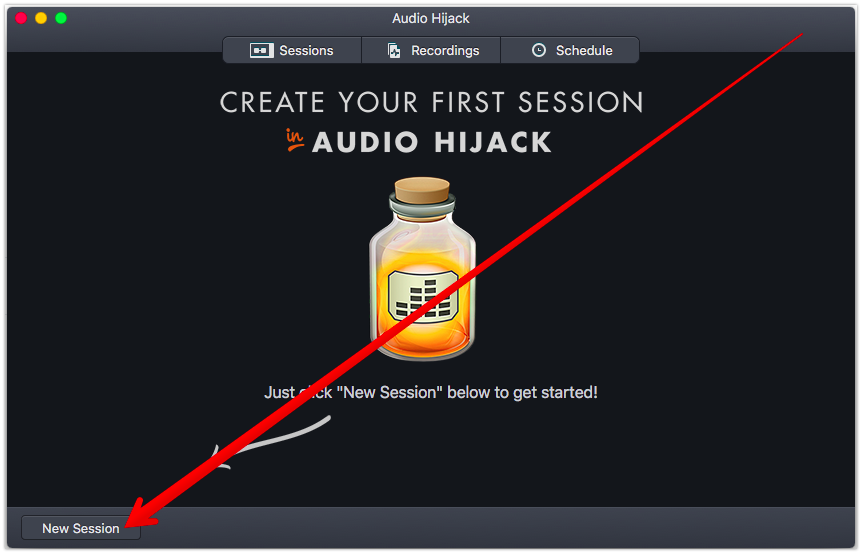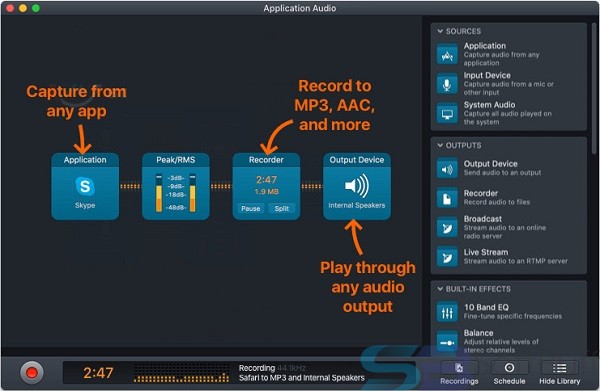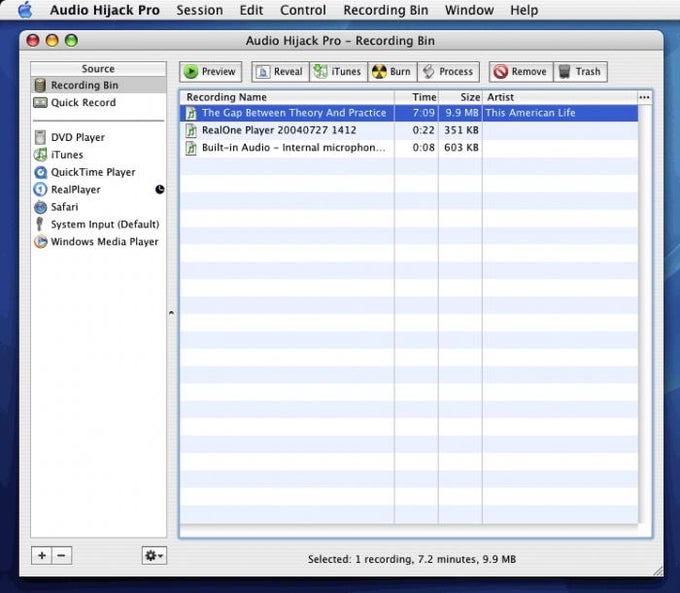


I use Ecamm Live with Restream, and then I use Loopback for lots of cooler things, and then Audio Hijack for all my Zoom meetings.ĭon’t miss an episode! You can subscribe on Apple podcasts here - or on other podcast players. You can keep it super simple with something like Restream, which I use regularly. And you don’t need to use Loopback if you have a Rodecaster.īut also remember, to get started with live video you don’t need any of this. So, you don’t need a Rodecaster if you want to use Loopback. The Rodecaster won’t help with this, it can do some cool things, however you will still need Loopback to route the audio from one app to another within your Mac. However, the Rodecaster doesn’t really help if you have a guest on or if you are using OBS Studio with Skype and want to route the audio from that into OBS. You can use these alongside your computer audio, and add sound effects as well.
#Audio hijack broadcasting pro
Loopback allows you to do lots of different things with your audio on a Mac.Ĭan You Use A Rodecaster Instead of Loopback? Listen at Ī couple of weeks ago I talked about using the Rodecaster Pro for live streams, which is great as you can use up to four microphones at the same time. You can get a little advanced with this and record yourself and guests, as well as different types of audio on different tracks and files. This way you can bring in guests via Skype or Zoom as a virtual audio device and easily accommodate for multiple audio sources on your live show. What I usually do is use Loopback to capture audio and route it through Ecamm Live. "I created a virtual audio device in Loopback called ‘Chrome’ and what this does is take the audio from Google Chrome and then outputs that to the Chrome audio device"īasically, what this allows you to do is capture audio from multiple inputs and devices at the same time. You can also route in the audio from another source, such as a video on Google Chrome, or Zoom or OBS studio. This allows you to combine lots of different physical audio devices, such as multiple microphones. However, on Loopback, you can also create virtual audio devices. When you are recording your live show you will have physical audio devices such as an external microphone or a built-in computer microphone.

It also allows you to combine different audio devices at the same time.

Several additional minor improvements can be found in this update, including:.As well, an issue where the “Inspect” button could break has also been fixed. The “Inspect” and “Actions” buttons in the Recordings sidebar no longer start off inactive, fixing a regression found in version 4.2.0.ahcommand script was opened to the “Debugging” window, has been resolved. A particularly nasty bug, where session data could be lost when an.Audio Unit plugins built using the JUCE framework, such as those from Universal Audio, now properly respond to mouse events in their secondary windows.Assorted issues with deleting recordings have been corrected, fixing issues where deletions could fail or appear to fail.As well, VoiceOver now better identifies the position of blocks, and the “Session List” window now has improved VoiceOver support. The “Parametric EQ” and “Ducking” blocks have been enhanced to be easier to use with VoiceOver. Many improvements have been made to accessibility throughout the app.Improved options for Impulse Response resampling have been added to the new “FIR Filter”.


 0 kommentar(er)
0 kommentar(er)
